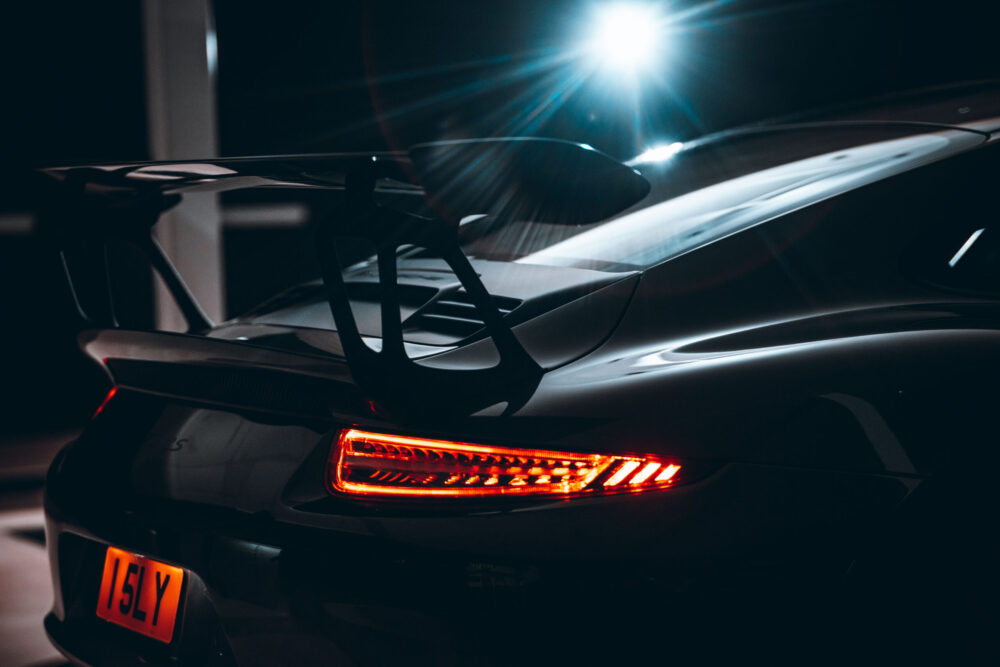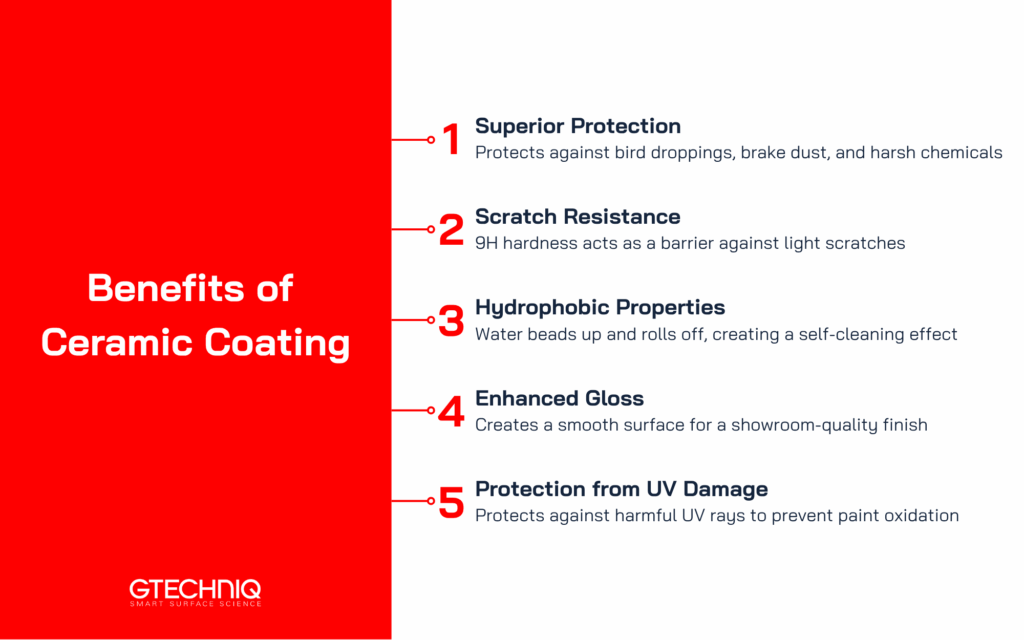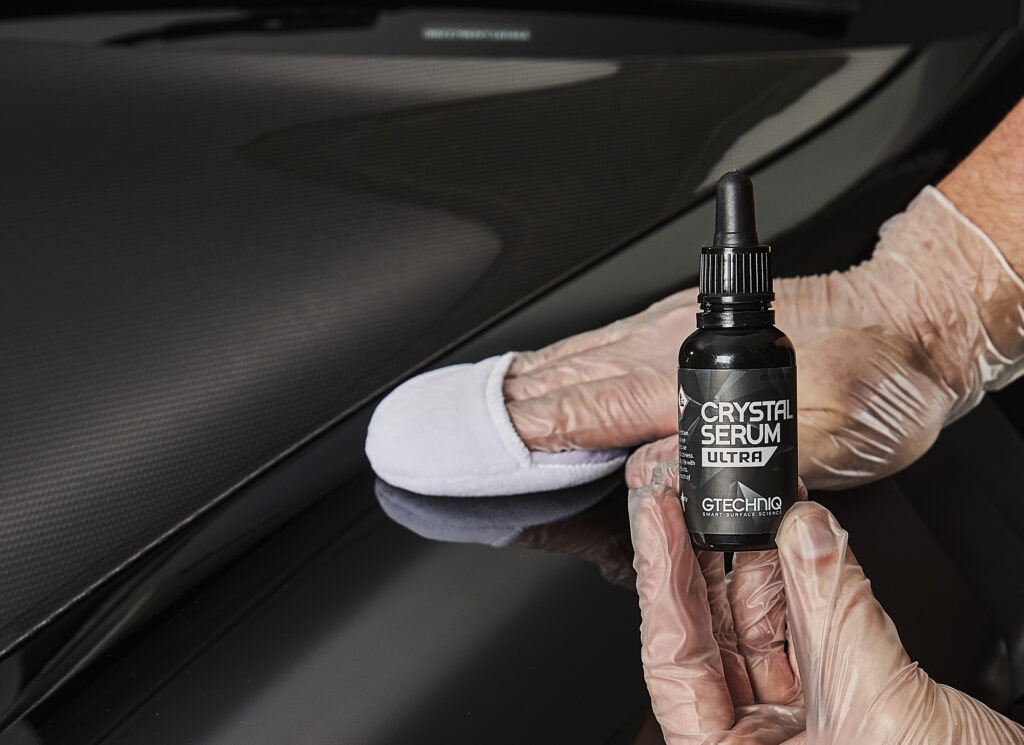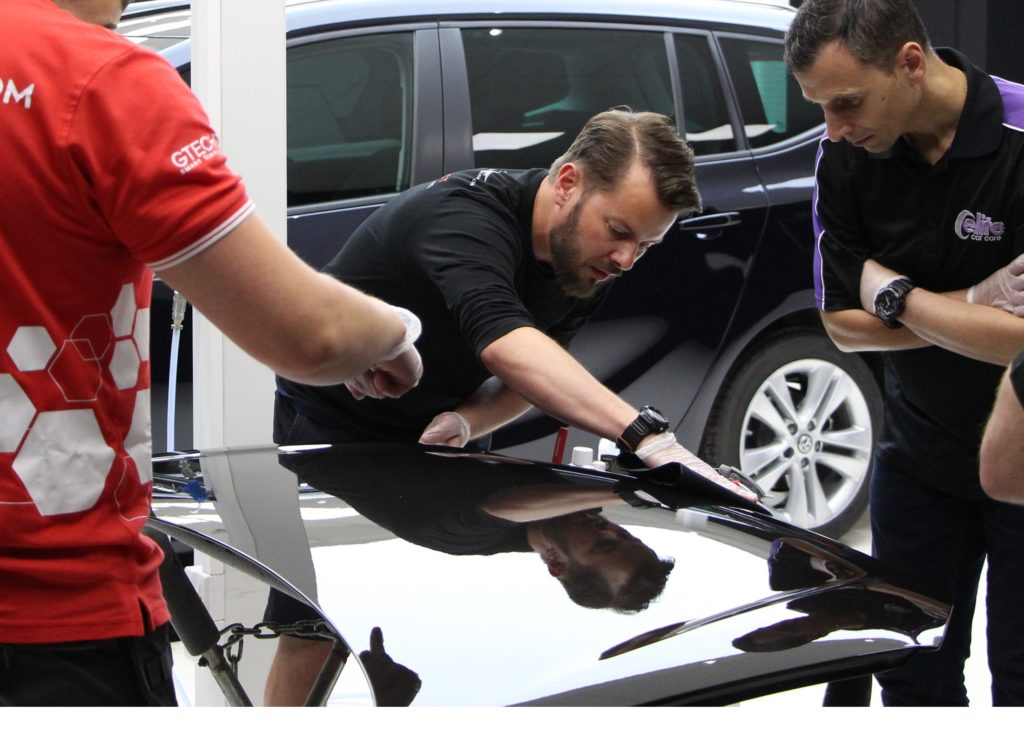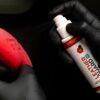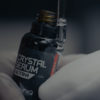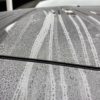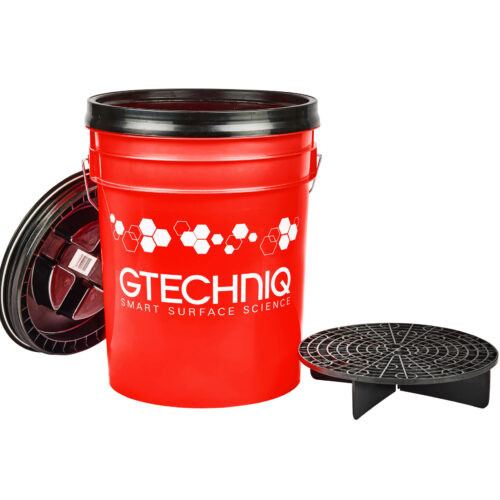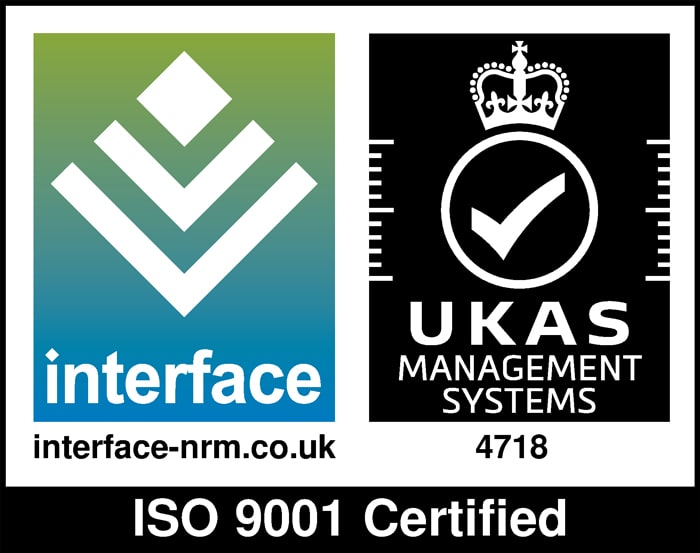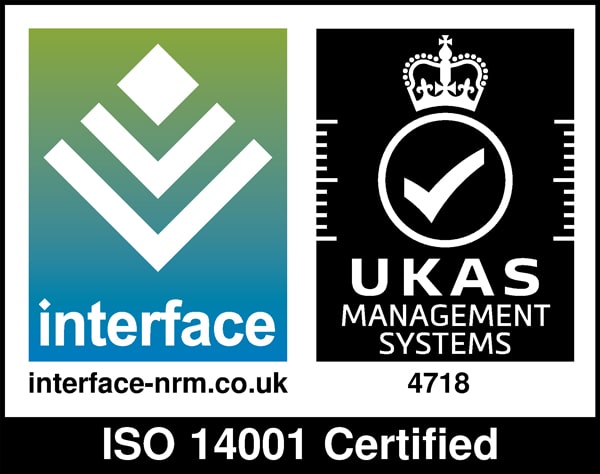What Is a Ceramic Coating?
A ceramic coating is a liquid polymer solution that creates a protective layer on a vehicle’s paint through a chemical bonding process. This nano-ceramic coating consists of silicon dioxide (SiO2) and other ceramic materials that form a thin layer of protection against environmental contaminants. Unlike traditional waxes, ceramic coatings provide long-lasting protection that can endure for years rather than months.
The coating works by creating a hydrophobic surface that repels water, dirt, and other environmental elements. This hydrophobic property makes the coated surface significantly easier to clean and maintain. The protective layer shields the car’s paint from UV damage, acid rain, bird droppings, and other harmful environmental factors.
Benefits of Ceramic Coating
Superior Protection
The protective layer guards against environmental contaminants such as bird droppings, brake dust, and tree sap that can damage the clear coat. The coating’s chemical resistance also provides protection against harsh chemicals and detergents.
Hydrophobic Properties
One of the most notable benefits is the coating’s hydrophobic properties. When applied correctly, water beads up and rolls off the surface, carrying dirt and grime with it. This self-cleaning effect reduces the need for frequent washing and helps prevent water spots from forming on the paint.
UV Damage Prevention
Vehicles exposed to direct sunlight are susceptible to UV damage, which can cause oxidation and fading. Ceramic coatings contain UV inhibitors that protect the paint from harmful UV rays, helping maintain the vehicle’s appearance over time.
Scratch Resistance
While not completely scratch-proof, ceramic coatings provide a level of scratch resistance against light scratches and swirl marks. The hardened layer (typically 9H on the pencil hardness scale) acts as a sacrificial barrier that can withstand minor abrasions.
Enhanced Gloss
Ceramic coatings enhance the depth and clarity of the paint, especially on darker colors. The smooth surface created by the coating reflects light more effectively, resulting in a glossier, showroom-quality finish.
Types of Ceramic Coatings
Quartz-Based Coatings
Quartz-based ceramic coatings like C1 Crystal Lacquer bond chemically to various surfaces, including clear coat, acrylic, and other paint types. These coatings are relatively thin but hard, offering good resistance to swirl marks. For optimal results, overcoating with additional products can enhance water repellency and gloss.
Composite Ceramic Coatings
Products like Crystal Serum Ultra represent composite ceramic coatings that phase separate into two distinct layers when applied. The base layer bonds to the paintwork while the top layer provides enhanced hardness (up to 10H) and superior chemical resistance. These premium coatings typically offer the best scratch resistance and longevity.
Consumer-Grade vs. Professional-Grade
Consumer-grade ceramic coatings are designed for DIY application and provide good protection for 1-3 years. Professional-grade options like Crystal Serum Ultra must be applied by accredited detailers, as improper application may require removal by sandpaper. These professional coatings often come with guarantees of up to 9 years.
Specialized Coatings for More Than Just Cars
Ceramic protection isn’t just for automotive paintwork—Gtechniq also offers advanced solutions for boats and bicycles, designed to withstand the unique demands of marine and cycling environments.
Gtechniq Marine
Saltwater, sun, and grime are no match for Gtechniq Marine ceramic coatings. These products are engineered to:
- Prevent UV fading and oxidation on gelcoat and painted surfaces
- Repel salt, algae, and waterline buildup
- Make cleaning faster and easier after every outing
From hull to topside, Gtechniq Marine coatings deliver long-lasting protection and a brilliant finish, whether you’re docked or offshore.
Gtechniq Bike
Whether you’re tackling muddy trails or city streets, Gtechniq Bike ceramic coatings help keep your ride in peak condition. These coatings:
- Shield frames and components from dirt, oil, and road grime
- Offer hydrophobic and oleophobic properties for easy cleaning
- Enhance gloss and resist scratches—even in harsh riding conditions
With dedicated cleaners, degreasers, and ceramic protection, the Gtechniq Bike line keeps your frame looking sharp and performing smoothly.
Application Process
Preparation
Proper preparation is crucial for ceramic coating success. The vehicle must be thoroughly cleaned to remove all contaminants. This typically involves:
- Washing the vehicle
- Using a clay bar to remove embedded contaminants
- Paint correction to address swirl marks and light scratches
- Surface decontamination to ensure a perfectly clean surface
Application
The coating application requires careful attention to detail:
- Apply the ceramic coating product in a controlled environment away from direct sunlight
- Use the provided applicator or a premium microfiber towel to apply the coating in small sections
- Allow the coating to flash (begin to cure) for the recommended time
- Remove excess product with a clean microfiber cloth
- Maintain appropriate weather conditions during application (controlled temperature and humidity)
Curing
After application, the coating needs time to cure and form a proper chemical bond with the paint. This typically requires:
- Keeping the vehicle dry for 24-48 hours
- Avoiding washing for 7-14 days
- Limiting exposure to environmental elements during the initial curing period
Maintenance of Ceramic Coated Vehicles
To maintain the ceramic coating’s effectiveness:
- Wash regularly using pH-neutral car shampoo
- Avoid automatic car washes with harsh brushes
- Remove bird droppings, tree sap, and other contaminants promptly
- Apply a compatible ceramic booster product every few months
Alternative Paint Protection Options
While ceramic coatings offer excellent protection, alternatives include:
Paint Protection Film (PPF)
PPF provides superior protection against rock chips and physical damage. Some vehicle owners choose to apply ceramic coating over PPF for combined benefits.
Traditional Waxes and Sealants
These provide temporary protection but require more frequent reapplication compared to ceramic coatings.
Choosing the Best Ceramic Coating
When selecting the best ceramic coating for a vehicle, consider:
- Desired durability (1-9 years)
- Budget constraints
- DIY capability vs. professional installation
- Specific needs (e.g., extreme weather conditions, daily driver vs. show car)
Premium products from established manufacturers typically offer better hydrophobic properties, chemical resistance, and longevity than generic alternatives.
Specialized Ceramic Coating Products from Gtechniq
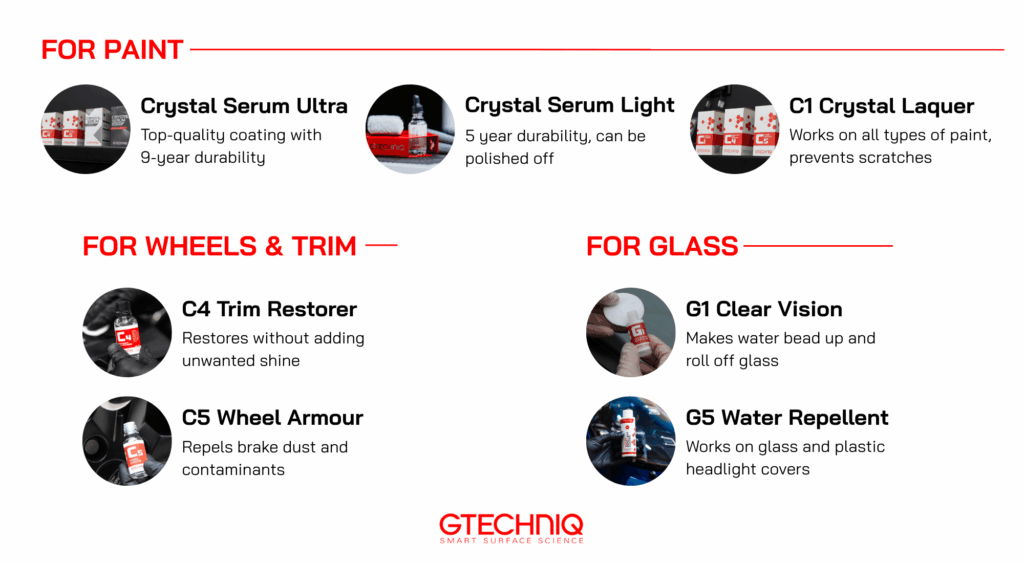 Different vehicle surfaces require specialized ceramic coating products:
Different vehicle surfaces require specialized ceramic coating products:
For Paint
- Crystal Serum Ultra: A top-quality coating that lasts 9 years. It creates two layers of protection – a base layer that sticks to the paint and a harder top layer that fights off scratches and chemicals. Only trained experts can apply this product.
- Crystal Serum Light: An easier-to-use version that works almost as well as Ultra but doesn’t last quite as long (5 years). If applied incorrectly, it can be polished off, unlike Ultra, which needs sanding.
- C1 Crystal Lacquer: Works on all types of paint and helps prevent small scratches. Can handle heat up to 500°C, which is good for surfaces that get very hot.
For Trim and Wheels
- C4 Trim Restorer: A super-thin coating that bonds with plastic trim parts and makes faded trim look new again without making it too shiny.
- C5 Wheel Armour: Made just for wheels to keep brake dust from sticking. Can handle the high heat that wheels generate when braking (up to 600°C).
For Glass
- G1 Clear Vision: Makes water bead up and roll off glass, helping you see better when driving in rain.
- G5 Water Repellent: Works on both glass and plastic headlight covers to keep them clear.
Investing in Long-Term Vehicle Protection
Ceramic coatings represent a significant advancement in vehicle paint protection technology. When properly applied and maintained, these coatings provide long-lasting protection against environmental factors while enhancing the vehicle’s appearance. Though more expensive than traditional protection methods, the durability and performance make ceramic coatings a worthwhile investment for those looking to preserve their vehicle’s finish for years to come.
For optimal results, consult with professional detailers who can recommend the appropriate ceramic coating product based on specific requirements and provide proper application for maximum durability and performance.
